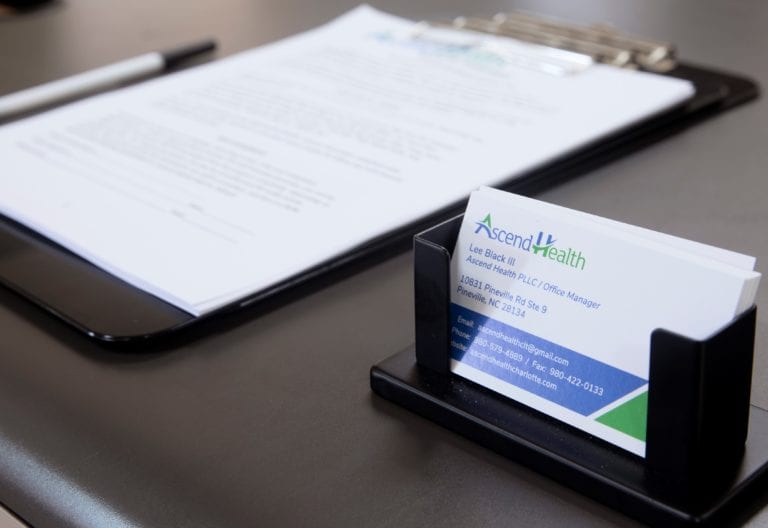A successful transition from inpatient detox or rehab to everyday life often hinges on ongoing support and structured care. A suboxone clinic for long-term recovery can provide the comprehensive care you need to manage cravings, prevent relapse, and rebuild your life. By combining medication-assisted treatment with counseling, case management, and peer support, these clinics form the backbone of an effective recovery continuum.
In this article, you’ll learn how outpatient Suboxone maintenance works, why it’s vital for sustained sobriety, and how to tap into a full aftercare continuum—like the one offered by Ascend Health—to guide you through every step of long-term opioid recovery.
Understand Suboxone clinics
Suboxone clinics specialize in medication-assisted treatment (MAT) for opioid use disorder. They offer buprenorphine-based therapy in a regulated environment designed to help you stabilize, reduce withdrawal symptoms, and focus on recovery.
Key features of Suboxone clinics:
- Authorization and monitoring: Providers hold special waivers from the Department of Health & Human Services to prescribe buprenorphine safely.
- On-site dispensing: Clinics with an Opioid Treatment Program (OTP) license can administer Suboxone directly, avoiding pharmacy hurdles [1].
- Transition to take-home doses: After initial stabilization, you often move from frequent visits to monthly check-ins, giving you greater flexibility.
By choosing a dedicated Suboxone clinic, you benefit from medical oversight at every stage, reducing risks like precipitated withdrawal and ensuring compliance with treatment protocols.
Explore treatment components
Effective opioid recovery relies on a blend of medication management, therapeutic support, and regular monitoring. A Suboxone clinic for long-term recovery typically offers the following components.
Medication management
Buprenorphine, a partial opioid agonist, binds to your brain’s opioid receptors more gently than full agonists, easing cravings without producing a high [2]. Naloxone is added to discourage misuse. Together, they:
- Reduce withdrawal symptoms for 24 to 42 hours, thanks to buprenorphine’s long half-life.
- Lower overdose risk and stabilize brain chemistry.
- Allow you to function normally at work, school, or home.
Many clinics transition you into a suboxone maintenance therapy outpatient program once you’re stable, so you can continue treatment with minimal disruption to your routine.
Therapy and counseling
Medication alone isn’t enough. Major health organizations recommend combining Suboxone with psychosocial support. Clinics often include:
- Individual therapy to explore underlying issues.
- Group counseling for shared experiences and accountability.
- Specialized tracks like outpatient mat with family therapy or dual diagnosis mat program if you face co-occurring mental health challenges.
Therapy builds coping skills you’ll use long after medication doses taper, addressing the emotional and behavioral aspects of addiction.
Monitoring and support
Continuous oversight helps you stay on track:
- Regular drug screenings ensure adherence and discourage relapse.
- Case managers connect you with housing, employment, or legal aid.
- Telehealth options let you check in between in-person visits, such as through a telehealth suboxone maintenance program or telehealth opioid treatment with suboxone.
This multifaceted approach creates a supportive environment where you feel empowered to maintain progress.
Review long-term benefits
Opting for a suboxone clinic for long-term recovery unlocks advantages that extend beyond immediate withdrawal relief. You’ll build a strong foundation for lasting sobriety.
Stabilize cravings and withdrawal
By maintaining a steady dose of Suboxone, you:
- Experience fewer and milder withdrawal symptoms.
- Reduce intense drug-seeking impulses.
- Lower risk of early relapse.
Studies show that buprenorphine-based MAT cuts fatal overdoses by about 50% and decreases nonfatal overdoses [3].
Prevent relapse risk
Long-term Suboxone treatment correlates with:
- Higher sustained sobriety rates.
- Reduced criminal activity.
- Improved social functioning, such as stable employment and relationships [4].
Flexible prescription models let you stay in treatment for months or years as needed, similar to managing diabetes with insulin.
Improve quality of life
Medication-assisted care in a supportive setting helps you:
- Rebuild physical health.
- Reestablish trust with family and community.
- Engage in meaningful activities without constant fear of withdrawal.
By addressing both the physiological and psychosocial facets of opioid use disorder, a Suboxone clinic fosters comprehensive care and paves the way for personal growth.
Plan your aftercare continuum
Recovery doesn’t end with stabilization. A robust aftercare continuum—like Ascend Health’s—links you to services that protect gains made during early treatment.
Tailored relapse prevention
Relapse prevention therapy teaches you to identify triggers and implement coping strategies. Through a relapse prevention mat treatment track, you can:
- Map high-risk scenarios.
- Develop stress-management tools.
- Practice refusal skills in a controlled environment.
Outpatient Suboxone maintenance
Once you’re stable, you’ll likely shift into a structured outpatient phase. Options include a dedicated aftercare suboxone treatment program or a broader suboxone outpatient recovery program. These programs maintain medication oversight while freeing you to pursue work or education.
Family and peer involvement
Supportive networks boost accountability and hope. Family therapy and peer groups create a web of encouragement. You might join a veteran-focused track like veteran opioid treatment program or an outpatient opioid program that takes medicaid, depending on your circumstances.
This continuum ensures that when challenges arise, you aren’t navigating them alone.
Access ongoing support services
Beyond core treatment, clinics often connect you to a range of services that address social determinants of health.
Case management and resources
Your case manager can link you with:
- Housing or sober living arrangements.
- Employment counseling.
- Legal assistance for pending charges or child custody issues.
By removing logistical barriers, you can focus on recovery rather than paperwork.
Peer support networks
Group meetings and recovery coaching foster camaraderie. Sharing experiences with peers helps you feel understood and less isolated. Many clinics host specialized groups, such as those for young adults or parents, ensuring you find your community.
Telehealth and digital tools
When in-person appointments aren’t feasible, telehealth fills the gap. You can access therapy and medication check-ins through a telehealth relapse prevention mat platform. Digital reminders, online support forums, and smartphone apps reinforce healthy habits between visits.
Compare medication-assisted therapies
While Suboxone is a cornerstone of outpatient MAT, you may encounter other options. Understanding the differences helps you make an informed choice.
Suboxone vs methadone
| Feature | Suboxone | Methadone |
|---|---|---|
| Prescribing flexibility | Written by waivered physicians, filled at pharmacies | Strictly dispensed at OTP clinics |
| Dosing frequency | Daily home doses after stabilization | Often daily supervised dosing |
| Risk of misuse | Lower due to partial agonist and naloxone combo | Higher misuse potential |
| Clinic visit requirements | Monthly check-ins after stabilization | Daily or frequent visits |
| Overdose safety | Ceiling effect reduces overdose risk | Full agonist, higher overdose risk |
This comparison highlights why Suboxone’s flexibility and safety profile make it ideal for outpatient recovery.
Sublocade and other injectables
If you prefer long-acting options, ask about sublocade treatment with insurance coverage. Injectable buprenorphine offers monthly dosing, eliminating daily pill routines while maintaining steady medication levels.
Navigate insurance and coverage
Cost should not stand between you and recovery. Many Suboxone clinics participate in insurance and offer sliding-scale or Medicaid-based programs.
Insurance-based programs
- Most private plans cover Suboxone as an evidence-based treatment [5].
- In-network clinics help minimize out-of-pocket costs.
- You can often combine coverage for therapy, case management, and pharmacy costs through an insurance covered outpatient recovery program.
Affordable care options
If you’re uninsured or underinsured, look for:
- State or federal grants.
- Community health centers with MAT subsidies.
- Sliding-scale programs for affordable suboxone treatment for addiction.
Medicaid and specialty tracks
Medicaid recipients may qualify for a medicaid-friendly outpatient opioid program. Veterans can access dedicated benefits via a veteran opioid treatment program.
Understanding your coverage options ensures you secure continuous care without financial strain.
Take the next step
Engaging with a suboxone clinic for long-term recovery means committing to a structured, evidence-based path toward lasting sobriety. With medication management, therapy, case support, and peer networks woven into a cohesive aftercare continuum, you’ll have the tools necessary to navigate life’s challenges without returning to opioid use.
Reach out today to learn how an outpatient Suboxone maintenance clinic—or Ascend Health’s complete aftercare continuum—can support your recovery goals. Lasting recovery is built one step at a time, and you don’t have to walk that path alone.



